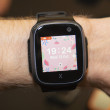Review: Sony Xperia X - Unlocked
Jun 29, 2016, 11:45 AM by Eric M. Zeman
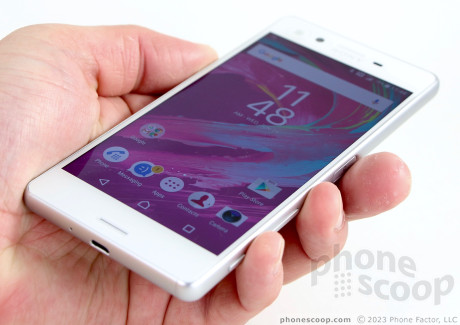
The Xperia X is an unlocked Android smartphone that Sony is selling directly to consumers. The phone departs from Sony's Xperia Z series in ways that are both good and bad. This compact handset works with AT&T and T-Mobile, delivers good battery life, and has an excellent camera. It's a shame that so many features have been stripped out. Here is Phonescoop's full review of the Xperia X from Sony.
Hardware
Is It Your Type?
The Xperia X is a mid-range handset that Sony is selling directly to consumers through its web site. The phone supports AT&T and T-Mobile LTE, and targets the unlocked market, as opposed to carrier-branded phones. If you value independence from wireless network operators, the Xperia X is worth a look.
Body
The Xperia X sees Sony taking a slightly new direction with its smartphones. The X series seemingly supplants the Z series as Sony's main line of devices moving forward. Of the first three Xperia X handsets announced, the X sits in the middle, sandwiched between the high-end X Performance, and the low-end XA. Using it, the Xperia X is plainly a mid-market phone through and through.
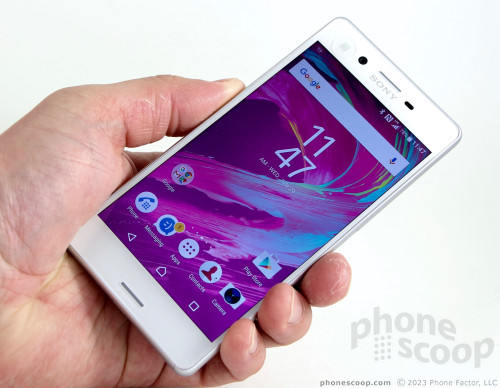
The design isn't all that dissimilar to the outgoing Xperia Z5 family. The X has a metal-looking frame with a glass front and a simple slab shape. If you've been paying attention to the evolution of Sony's stark design language you'll immediately recognize the Xperia X as a Sony. Perhaps the biggest departure from the old Z series is the X's use of metal for the rear panel rather than glass, and the use of polycarbonate for the frame rather than aluminum. These changes don't impact the look all that much, but they do alter the phone's experience dramatically as far as hand feel is concerned.
I appreciate Sony's use of "2.5D Glass" where the display meets the edges. It helps smooth out the seam a bit. The side edges and corners have pleasing curves so the phone never digs into your skin. I miss the glass rear panel a bit, but the metal still works. Sony still can't seem to avoid humongous bezels, but the Xperia X does make some improvement in that regard.
The Xperia X is a compact device. The 5-inch screen allowed Sony to keep the overall dimensions in check. The weight is comfortable. I found the device enjoyable to use for several days. Most people should be able to hold and use the phone with one hand, meaning the device will work for those who have smaller hands. It fits in pockets no problem.
I'm not 100% sold on the build. Sony generally uses top-notch materials, but this is where the Xperia X takes a step in the wrong direction. As noted, the frame is polycarbonate, not metal. The front glass panel is fitted into the frame tightly enough, but the rear metal cover is a different story. A thick and obvious seam separates the metal and plastic and, worse, it is uneven. These may be eyesores to me and me alone, but make no mistake, they're there. The frame and rear panel both have matte finishes that some people will like and others will not. I'm leaning toward the latter. The Xperia X does not feel cheap at any point, but it also doesn't feel like the high-end phones we know Sony can put together.
The phone comes in gray, white, rose gold, and lime gold. The display itself stands out starkly on the white and gold models, but blends in a bit better on the gray model. Other than the display, the front glass houses the user-facing camera and a sensor, which are easily spotted. There are two slits in the glass, one above and one below the screen, for the earpiece and microphone, respectively, and stereo speakers. The X does not have any buttons on front, as it uses on-screen controls.
Sony stuck a user-friendly SIM card tray on the left edge. The tray can be removed without a SIM tool or paperclip thanks to a notch that lets you dig it out with your thumbnail. The tray holds both SIM and memory cards. The headphone jack is on top and the micro USB port is on bottom.
The Xperia X's physical buttons are arranged identically to that of the Xperia Z5 Compact. Trust me when I say this is not a good thing.
The screen lock / power key is located about in the middle of the right edge and sits lower than the frame. It's easy to find thanks to the huge indentation in the frame, but travel and feedback are absolutely awful. Then there's the volume toggle. The toggle is perched near the bottom right corner of the phone. The camera button is somehow crammed in below it. I can find the buttons easily, and travel and feedback are decent; these aren't the problem. The problem is location location location.
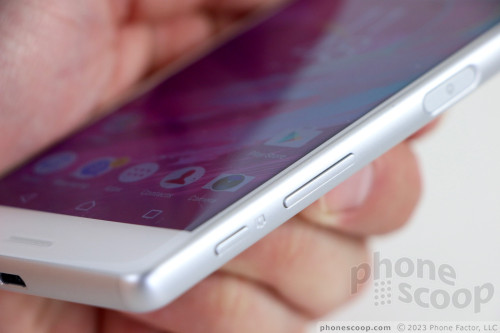
I hold my phone in my right hand, and often place my thumb along the bottom right edge of the phone to stabilize it. I found myself adjusting the volume and turning the camera on and off accidentally far, far too frequently.
The rear panel may be made of metal, but it's really darned boring. Sure, the matte finish is decent, but the panel is a flat rectangle with no personality whatsoever.
Sony phones haven't had accessible batteries for years and that's no different with the Xperia X. The metal cover is glued to the frame and cannot be removed without damaging the phone. No battery access may be a dealbreaker for some people.
Last, but not least, the Xperia X is not waterproof like the Xperia Z series. You have to upgrade to the significantly more expensive X Performance if you want a waterproof Sony. Further, the X for the U.S. market doesn't have a fingerprint sensor nor any other sort of biometrics for securing the phone. Boo.

Screen
Sony gave the Xperia X a fine display. It measures 5 inches across the diagonal with full HD (1920 by 1080 pixel) resolution. The LCD panel includes Sony's TriLuminos and X-Reality technologies to improve color and clarity. The colors certainly pop, and the display is bright enough for indoor and outdoor use. I think the size and pixel count provide more than enough clarity and can't say whether or not X-Reality helped improve it. The display offers fantastic viewing angles and avoids fingerprints like the plague. It's a good screen.
Signal
The Xperia X is sold unlocked with support for AT&T and T-Mobile's LTE networks. I tested it on both AT&T and T-Mobile's 4G networks around New York City and was mostly pleased with the Xperia X's cellular performance.
The phone was able to make calls in strong and weak coverage environments alike and didn't drop calls on either network, even at highway speeds. Call setup times were quick, and the phone didn't miss any calls on either network. The Xperia X was somewhat faster on T-Mobile's LTE 4G network than AT&T's LTE 4G network, but not by much. This could be because the phone doesn't support AT&T's LTE Bands 29 and 30. The phone had no trouble finding LTE, but it did dip down to HSPA 3G more often than some phones. Either way, the phone was fast enough on both AT&T and T-Mobile to interact with Facebook, Twitter, Instagram, and the Play Store with no trouble.
Sound
The X is an acceptable voice phone. Sound quality through the earpiece is pretty good. Voices are warm, but sometimes prone to distortion. Volume is just barely adequate. The X is loud enough for use at home or the office, but hearing calls in the car or on busy city streets was difficult. People I spoke to through the X said I sounded “just okay.”
The speakerphone is close to useless. The quality drops noticeably, as most calls are riddled with distortion. Setting the volume up all the way won't help you hear calls in your car, or other noisy spaces. It's simply not loud enough. Ringers and alerts are plenty loud (somehow) and always got my attention. The vibrate mechanism provides enough of a jolt.
I'll take a moment here to point out that the Xperia X has stereo speakers with Dolby sound. The phone rocks as a mini boombox. I was easily able to fill my office with music thanks to the serious sound pumped out by the twin amplifiers. It also filled my garage while I was doing some yard work, but it doesn't quite push enough air for real outdoor use. Watching video, whether movies from Google Play or the latest silliness on YouTube, was always enjoyable thanks to the great sound quality.
Battery
The Xperia X ships with a 2,620 mAh battery that has a few tricks up its Lithium Ion sleeves. First, the battery lasts beyond one-and-a-half days. The Xperia X often pushed beyond lunch on the second day. Few phones deliver that much longevity from this size battery.
Second, the battery charges quickly. For example, 10 minutes plugged into a charger will add 5.5 hours of life to the battery. The battery takes well under two hours to recharge fully from 0%. We can thank Quick Charge for this rapid-charging skill.
Third, Sony is making use of technology from Qnovo to extend battery life; not daily battery life, mind you, but the overall longevity of the battery itself. It uses adaptive charging technology and can prevent the battery from losing capacity over time. In other words, after a year of daily charging cycles, the Xperia X battery should have a higher percentage of its capacity still available than most other batteries.
Last, the Xperia X includes three power management tools: Battery Saver Mode, Power Saver Mode, and Ultra Power Saver Mode. Between these and the already-very-good battery life, you can't get away with telling so-and-so that your phone died and that's why you didn't respond to their text.
Bluetooth, GPS, NFC, WiFi
All of the secondary radios do the jobs they were designed to do. I was particularly pleased with the Bluetooth radio, which connected to a range of speakers, headsets, and so on. Call quality was definitely below average via headsets and my car's hands-free system, but music sounded excellent via several different speakers. Sony's codec really helped improve music playback.
Let's talk about the NFC radio for a second. There's an incredibly unsightly sticker on the front of the phone next to the selfie camera. This sticker signifies the location of the NFC radio. Yep, the NFC radio is on the FRONT of the phone. It's much easier to use the NFC radio when you can actually seen the screen to know that it's been read by a nearby device. Seriously, this is the dumbest location I've seen for an NFC radio. Worse, the sticker itself is almost impossible to remove. Let's just say that, yes, the NFC radio does work, but not in a user-friendly way.
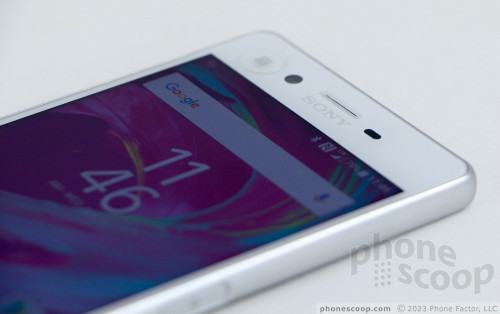
The X's GPS radio functioned just fine. It partnered up with Google Maps to locate me quickly and accurately. It placed me on the map with accuracy as good as 30 to 40 feet. The X worked well as a navigation device.
The WiFi radio didn't give me any problems.
Software
Lock Screen
The Xperia X has a few useful tools for managing the lock screen. First and foremost, take the time to activate the tap-to-wake function. You can find it in Settings->Display. When enabled, a double tap will wake the screen. If you've chosen to protect your phone with a lock of some sort, you'll be able to see the basic lock screen and notifications. If you don't lock your phone (you should), double tapping bypasses the lock screen and brings you to the home screen.
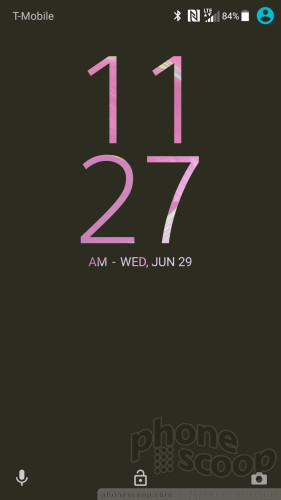
The lock screen itself includes the standard stuff: clock, notifications, and shortcuts to the phone and camera apps. I really appreciate that Sony allows you to select from a standard digital clock, an analog clock, or the Sony stylized clock for the lock screen. All three are readable. As always, you can choose how much notification is viewable from the home screen.
Security options include none, pattern, password, or PIN. (Again, no fingerprints on this model.)
Home Screens
The Xperia X runs Android 6 Marshmallow with Sony's usual tweaks.
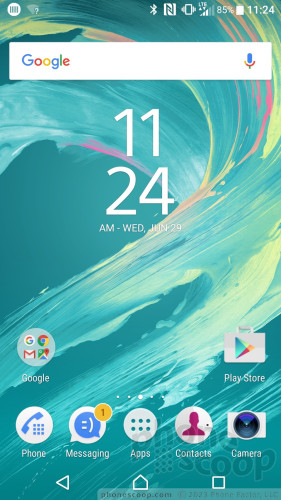
The Xperia X ships with five active home screen panels, three of which are jammed with apps and widgets. Press-and-hold one of the home screen panels to bring up the home screen control panel, which lets you easily adjust widgets, apps, wallpapers, themes, and general settings. The Quick Settings panel is the stock Android version, but Sony allows users to customize which toggles appear in the panel. More customization is always a good thing.
The app drawer is arranged in pages that you swipe left and right. Users can elect to view apps in custom order, most used, alphabetically, or by date. A search tool is always available in the app drawer, which is nice. Sony also allows users to disable — but not delete — about half of the pre-installed apps. (Disabling apps deletes user data and makes them inactive, but the core is still there.) The app drawer supports folders, too.
The settings tools behave as the stock Android tools do, but have been skinned with Sony's fonts and icons. I appreciate the dash of color. The one major difference to my eyes are the inclusion of themes. These bundle together similar color palettes for the home screen, app drawer, and other aspects of the user interface. Sony offers a few themes of its own, but Xperia X owners can design their own. Neat.
As far as performance goes, the Xperia X rates average. It relies on the Qualcomm Snapdragon 650 processor with 3 GB of RAM. The phone performed well while I used it. It never felt bogged down or slow, screen transitions were smooth, and apps opened in a jiffy. The processor provides enough oomph.
Camera
The quickest way to launch the camera is to press the dedicated camera button. The camera app opens quickly whether the phone is on or locked. The camera app — which is carried over from last year's Z series — is powerful and easy to figure out.
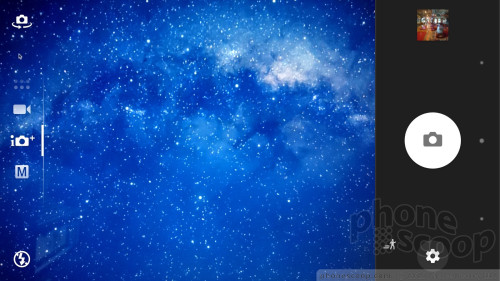
By default, the Xperia X relies on Sony's Superior Auto shooting mode. The other basic modes include manual and video. There's also an entire folder of fun, alternate modes for generating more interesting results.
The left side of the screen is reserved for toggles to the different modes in addition to controls for the flash and user facing camera. Swipe the screen up or down to jump from mode to mode.
Superior Auto generally succeeds in determining what the subject is and adjusting automatically to get the best shot. For example, I aimed the Xperia X at my laptop's keyboard and it switched to Macro. It also switched to Sport when it noticed I was moving the camera around a lot, and to Document when I held it close to some business cards. Superior Auto does allow you to adjust basic camera options, such as geotagging, review length, the timer, resolution, and more.
Manual Mode gives control freaks what they need to be truly creative. It allows you to set white balance, ISO, brightness, and color, and it also offers a number of scenes (gourmet food, soft skin, landscape, HDR, night, foot, party, beach, fireworks, etc.) I found it simple to dial in different scenes when using Manual Mode, and you can still let the camera take care of exposure, focus, and so on if you want.
There are 11 other shooting modes lumped into the Fun category, and you can download more if you wish. Those extra modes include: Panorama, 4K Video; Timeshift Video (high frame rate for slow-motion results); Sound Photo (takes photos with background sounds); Multi Camera (use both cameras at the same time); Face In (use both cameras to put your face in either photos or videos); AR Effect (take photos with virtual scenes and characters); Creative Effect (select effects - i.e., filters - for artistic photos and videos); Timeshift Burst (takes a quick burst before you press the shutter button to increase likelihood of getting good shot); and Style Portrait (for tweaking those selfies).
Each of these individual modes works fairly well, but takes some practice before you'll get good shots. I like that Sony included a quick, simple tutorial to help you learn each of the modes. The selection can be somewhat overwhelming.
The Xperia X can also detect smiles, and has four different settings for the flash, including fill-flash. Fill-flash helps take photos when you have a light background and a dark foreground and you want to make the foreground pop a little bit.
Everything about the camera is fast. It focuses quickly, and shoots/saves images quickly. I've always liked Sony's camera app. It could probably have a slightly cleaner UI, but, really, you can't ask for much more.
Photos/Video
Sony's Xperia X takes very good photos. The camera's default setting is (oddly) 8 megapixels in a 16:9 aspect ratio. You have to adjust it to access the full 23-megapixels in the 4:3 aspect ratio. Using the Superior Auto mode, I was very pleased with how the Xperia X captured focus, exposure, and white balance. The majority of the shots I took were good, if not very good. Only a handful were really off. I noticed some grain here and there in low-light shots, but for the most part was impressed.
Selfie lovers will be very pleased with the 13-megapixel user-facing camera. It captures images that are mostly sharp and properly exposed. The majority of pictures are free of grain, too, which is something that often plagues selfie cams.
The phone shoots video up to 1080p HD resolution. The video I shot with the Xperia X was generally impressive in terms of focus, exposure, and color.
I'd say you can use the Xperia X as an everyday camera and video camera without regrets. Few phones will perform better, especially at the Xperia X's price point.
Sony Stuff
A basic selection of Sony's apps are on board. The most important is the PlayStation app, which let users hook into their PlayStation accounts for gaming, watching videos, streaming music, and networking with friends. Some of the other extras include TrackID, Sketch, Movie Creator, Xperia Lounge, FM radio, and Lifelog for managing and interacting with media content. Many of these can be disabled, but not deleted. The X has 32 GB of internal storage, of which about 20 GB is available to end users. It's a good thing the phone accepts microSD cards up to 200 GB.
Wrap-Up
The Sony Xperia X represents a bit of a conundrum. The phone is a mid-range handset, but strives to be a flagship. The X doesn't offer some of Sony's best innovations, which makes it hard to take seriously as a flagship contender. Too bad, then, that Sony priced the Xperia X as high as it did.
From a distance, the Xperia X resembles the Xperia Z range. It's a shame the X loses the high-quality materials and build quality in favor of more economical choices. The plastic frame and metal back just can't compete with the metal frame and glass back of the Z series. That said, the Xperia X is compact, easy to use, and has a great screen. Battery life is quite good. In the minus column, the X is not waterproof and doesn't have a fingerprint sensor.
As far as core performance metrics are concerned, the X delivers average data performance, and below average voice quality on the networks of AT&T and T-Mobile. The Android 6 operating system flows well, and Sony's UI touches are light enough that they don't invoke frustration.
Perhaps the phone's best feature is the camera. I genuinely like the camera tools and was pleased with the 23-megapixel shooter's abilities.
Sony and other online retailers are selling the phone unlocked for the hefty sum of $550. That's a hard pill to swallow, especially given that the best phones (Galaxy S6) cost only a little more and phones that are just as good (Nexus 6P) cost less. If you're in the market for a pricey mid-range handset, then the Xperia X from Sony is an option, but not the best option.

Comments
No messages


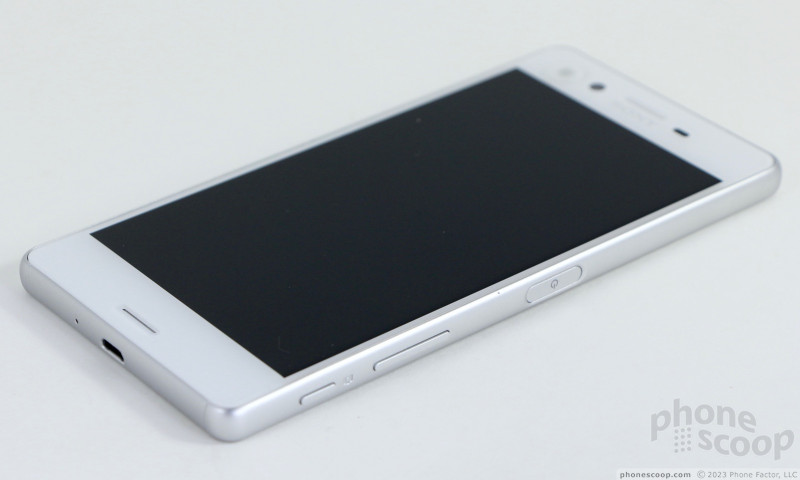




















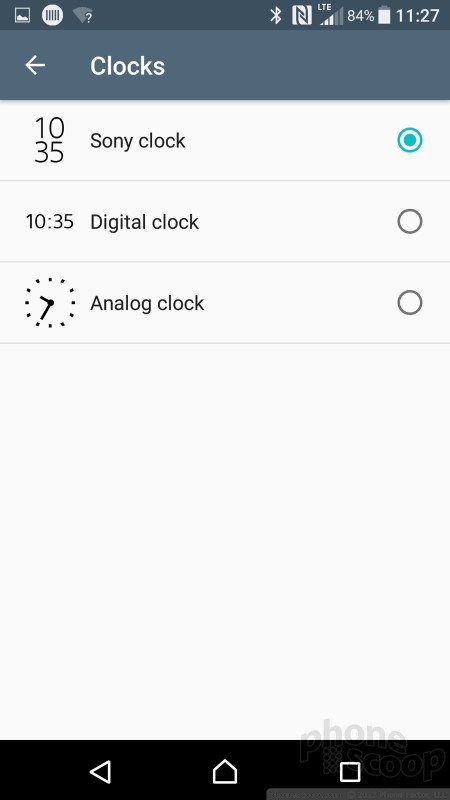





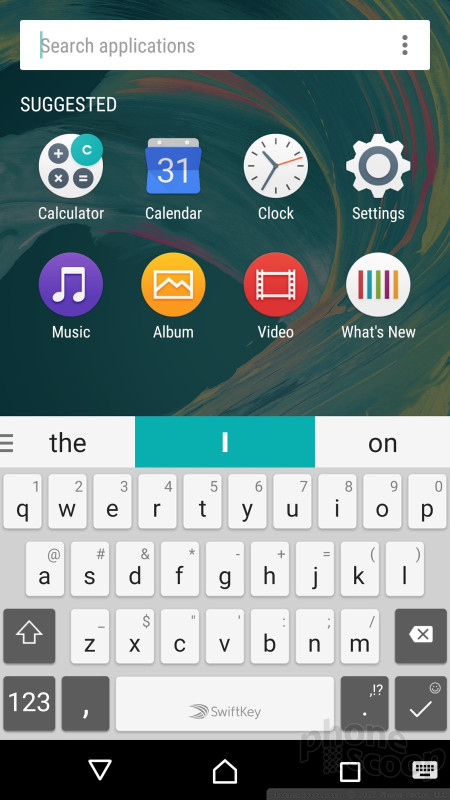







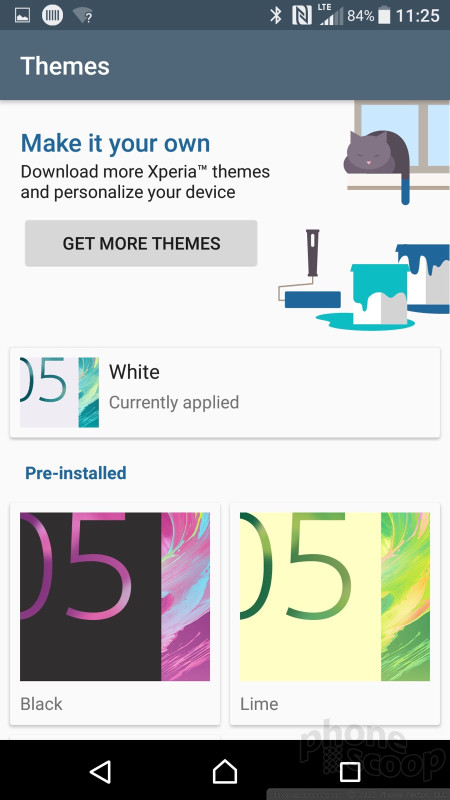




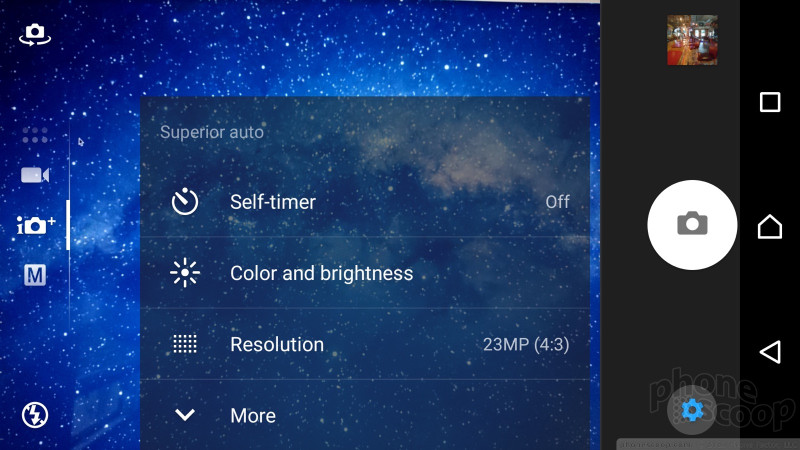






















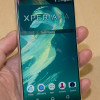 Hands On with Sony's Xperia X Series
Hands On with Sony's Xperia X Series
 Sony's Xperia X Series to Reach US In June
Sony's Xperia X Series to Reach US In June
 Sony Launches Xperia X Series
Sony Launches Xperia X Series
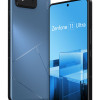 Asus Goes Big with Zenfone 11 Ultra
Asus Goes Big with Zenfone 11 Ultra
 Sony Xperia X
Sony Xperia X




